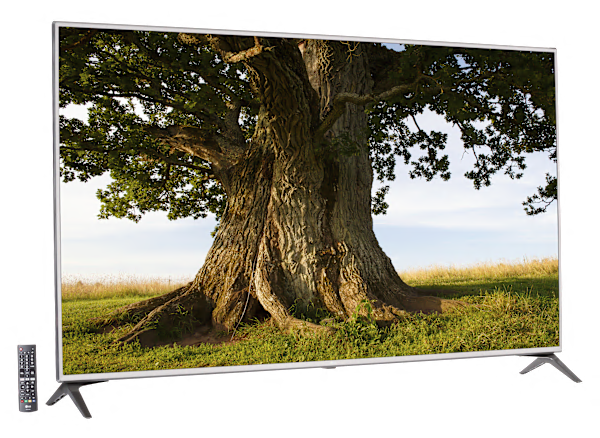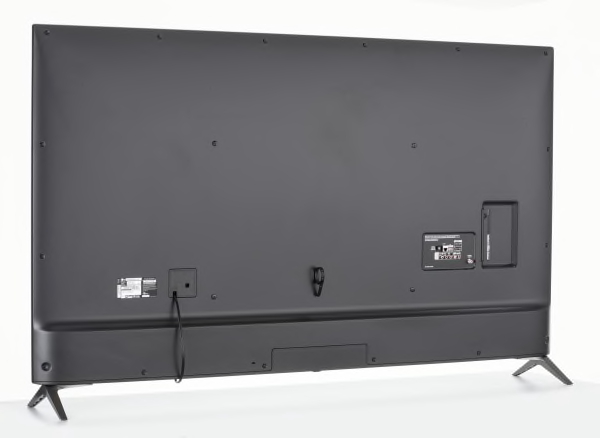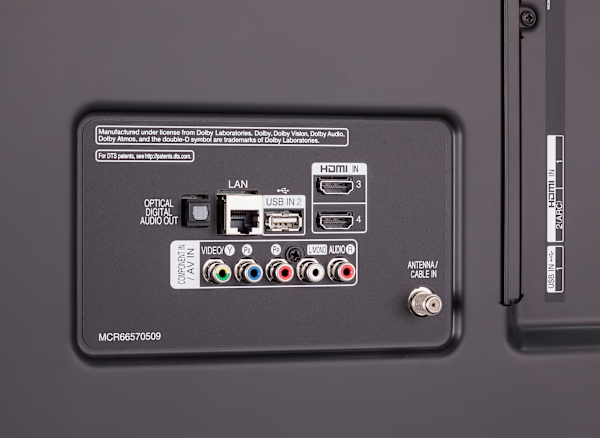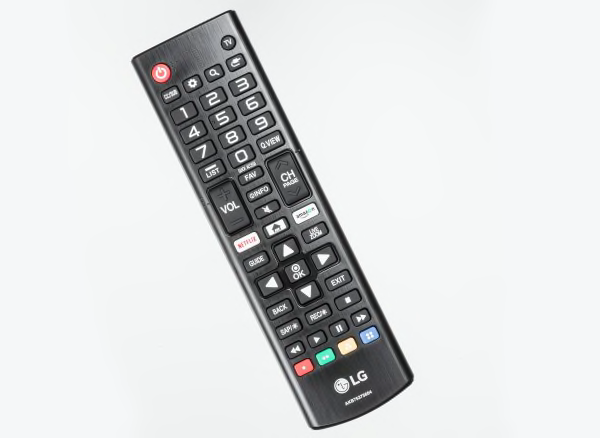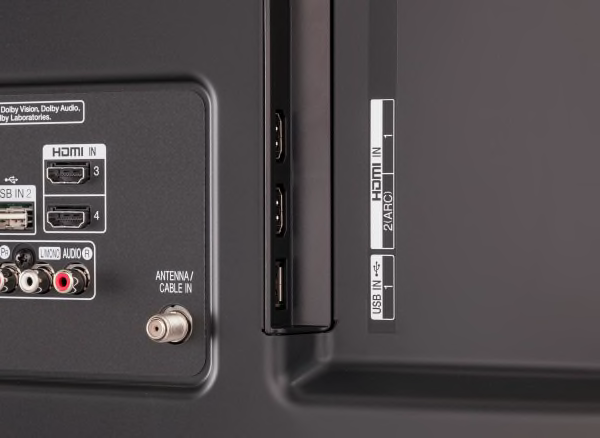HD PICTURE QUALITY. HD picture quality was excellent. It did an excellent job displaying the finest detail of HD content. Color accuracy was very good, with flesh tones in particular, looking natural. Color temperature was slightly on the warm side, lending images a reddish tone. Contrast--the difference between the darkest blacks and brightest whites--was good, so images had depth and dimension. Black levels are very good, with help from LG's vertically controlled edge "LED Local Dimming" feature, delivering fairly deep blacks that help contrast in darker scenes (though quality does degrade as you move to the sides - see viewing angle). This was one of the brighter models we've tested (with the backlight control turned up), so the picture remains quite viewable in a very sunny room. A lower backlight setting is recommended for a dimmer viewing environment. In scenes with subtly shaded light-to-dark areas, such as a sky during sunset, the model did a very good job producing a smooth transition without distinct, coarse bands. There was notable display non-uniformity that created brighter cloudy areas, most visible on very dark scenes (or in the black bars of a letterboxed movie). We routinely see this issue with LCDs and severity can vary from model to model. The deinterlacing and film mode operations were excellent on HD content; there was little or no trace of jaggies on the edges of objects for video and film-based 1080i video content, such as from cable.
VIEWING ANGLE. This LG has a moderate viewing angle overall, decent, but not quite as good as the better-performing TVs we've tested. The optimal seating position for best picture quality is directly in front of this model. When we viewed the TV from the sides, image quality got worse. The picture showed a moderate loss of color, so flesh tones looked a bit washed out. Black levels visibly brightened, reducing contrast especially on dark scenes. When viewing the image from above or below eye level to the screen, the vertical viewing angle was very good. The picture showed minimal change in color, contrast, and black level.
ULTRA HD PERFORMANCE. Overall UHD performance is very good but HD-to-UHD upconversion falls short. All native 4K content (non HDR) we played on this model, including movies and test videos, was presented in full 4K detail with excellent fidelity when played back via the TV's HDMI input. Via the USB port, high-resolution photos were displayed in full 4K detail. With regular HD content, the TV's HD-to-UHD up-conversion processing fell short, revealing some visible jaggies along the edges of diagonals when playing HD content.
HIGH DYNAMIC RANGE (HDR) PERFORMANCE. HDR performance is not effective. The display's lack of high peak brightness capability (by HDR standards) limited its ability to show the benefits of HDR to full effect on our test videos, while the overall image was dimmer in tone than expected and lacked the contrast we expect from our HDR test videos. It did a good job reproducing a greater range of nuanced shadow detail from black to white, with no obvious banding on areas of the image that have subtle shade variations. There was no visible loss of near-white shadow detail in the brightest areas. Brighter colored objects remained nicely saturated.
MOTION BLUR. This LG TV has good motion performance, with some blurring on our motion tests. This model does not include a blur reduction feature.
SCREEN REFLECTIVITY. Though not as mirror-like as on some models, this screen surface is glossy and therefore susceptible to reflections from a nearby lamp or window. It does a good job reducing glare from ambient light and maintains contrast in a brighter room environment.
SOUND QUALITY. This model has very good sound quality, better than most models we've tested. Whether you're watching a blockbuster movie, a concert, or TV show, it is able to deliver a satisfying listening experience. Bass was deep, providing satisfying fullness to the sound but lacking in definition a bit, and treble was nicely detailed, while the overall sound was a bit closed in. The speakers produced a good volume range so this model should play sufficiently loud in typical room environments, but quality does degrade at the highest settings. Also, at higher volume, dynamic compression kept the sound from distorting, but also limited the clarity of peaks in loudness, which can be distracting on some audio content. Unlike most of our tested models, its sound should satisfy the more discerning listeners, so an external sound bar is optional.
EASE OF USE. On first power up there is an on-screen guide that helps you through setting up the TV. LG's basic remote offers a traditional button keypad with high contrast labeling that is fairly readable in a dimly lit environment. It provides direct button access to Netflix and Amazon streaming services. The TV's stand is 60 inches wide.
INTERNET FEATURES. This TV provides advanced Internet capabilities via its "WebOS" portal with access to a library of applications, and a full Web browser. Movie streaming services include Netflix, YouTube, Amazon Prime Video and Hulu. Includes built-in Google Assistant (Optional), a virtual assistant, which allows you to use natural speech to ask questions, launch applications, and search programming via the remote's built-in microphone. Also provides support for Amazon Alexa.
CONNECTIONS. This model has four HDMI inputs-- one supports ARC (Audio Return Channel), one "component/composite shared" input (which means you can only use one type or the other at a time). It also has two USB ports, an optical digital audio out, an Ethernet port, WiFi wireless networking; DLNA, to access files within your home network; Casting, which allows you to send streaming content from your mobile device to the TV via your home network; Screen mirroring, where the image on your smartphone or other compatible device can also appear on the TV.
INCLUDED IN THE BOX. A quick start guide. An electronic manual in the TV's menu. A remote control with batteries. No printed manual is included.
ABOUT ULTRA HD TESTING: We test UHD picture quality using 4K movies, videos, photos, and test patterns to confirm these displays deliver performance to this format's full potential. We check the TV's ability to reproduce 4K image detail, as well as high dynamic range (HDR) for TVs that support this capability. Image quality is tested using a 4K movie player connected to the TV's HDMI input, as well as from files stored on flash drive plugged into the TV's USB port. We also check how well the TV can upscale HD movies to the display's higher UHD resolution while keeping artifacts such as "jaggies" along the edges of image content to a minimum. The best UHD TVs, and HDTVs, present high fidelity images that reveal the full quality of the best source content without degradation.

















